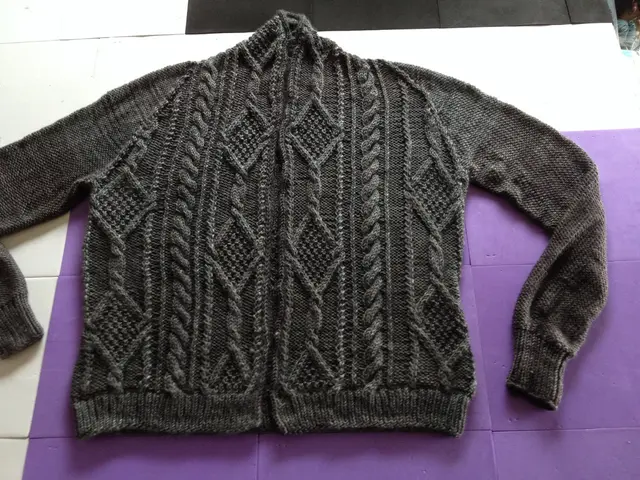Varied Methods of Marketing Promotion: A Comprehensive Guide
37 Common Advertising Techniques Used in Marketing
In the world of marketing, a vast array of strategies are employed to captivate audiences, foster interest, and stimulate sales. Here's a comprehensive list of 37 common advertising techniques, derived primarily from various sources, that form the backbone of many marketing campaigns.
- Logos – Using a distinctive logo or symbol to create brand recognition and recall.
- Celebrity Endorsements – Featuring famous personalities to boost credibility and attract their fans.
- Testimonials – Showcasing positive reviews or stories from satisfied customers.
- Weasel Words – Using vague or ambiguous words like "helps," "virtually," or "up to" to make claims sound impressive without definitive guarantees.
- Hyperbole – Exaggerating qualities or benefits of a product for emphasis.
- Repetition – Repeating the product name or slogan to increase memorability.
- Exaggerating Scale – Making claims about the product’s size, reach, or effectiveness that seem larger than in reality.
- Name-calling of Competitors – Disparaging competitors to make one’s own product look better.
- Invoking Fear – Suggesting unpleasant outcomes that the product can prevent.
- Bandwagon Appeal – Suggesting that everyone is using the product, so you should too.
- Bribery – Offering giveaways, discounts, or incentives to encourage purchase.
- Humor – Using comedy to capture interest and create a positive association.
- Sentimental or Attractive Imagery – Using heartwarming or beautiful images to elicit emotional response.
- Scientific Claims – Borrowing credibility by citing scientific facts or data.
- Sex Appeal – Using sexual imagery or innuendo to attract attention.
- Charitable Cause Association – Portraying the product as helping social or charitable causes.
- Health Claims – Emphasizing health benefits or wellness-related features.
- Aesthetically Pleasing Images – Employing visually attractive pictures to make the product more appealing.
- Identifying a Problem to Solve – Presenting the product as a solution to common problems consumers face.
Further advertising techniques and types of marketing collateral include:
- Point-of-Purchase (POP) Displays – Promotional displays in stores to catch the shopper’s eye, including temporary, semi-permanent, and permanent displays.
- Signage – Posters, banners, stickers placed strategically near the product.
- Vendor Shops – Dedicated spaces inside larger stores focused entirely on one vendor’s products.
Additional broader paid advertising types useful in marketing strategies:
- Social Media Ads – Targeted ads on platforms like Facebook, Instagram, LinkedIn.
- Paid Search Ads – Pay-per-click or pay-per-impression ads on search engines such as Google.
- Video Ads – Short commercials or sponsored videos online.
- Display Ads – Banner ads on websites or apps.
Other useful types of marketing collateral and techniques:
- Banners – Physical or digital large-format ads to promote sales or brand awareness.
- Magazines – Printed or digital magazines combining articles, testimonials, catalogs to educate and promote products.
Regarding the full list of 37 specific advertising techniques traditionally identified, notable sources such as the SlideShare document mention multiple direct techniques but do not explicitly enumerate all 37 one by one. However, common comprehensive lists in advertising literature include methods like:
- Association – Linking product with certain lifestyle or values.
- Bandwagon – Implied social proof of popularity.
- Card Stacking – Presenting only positive facts, omitting negatives.
- Glittering Generalities – Using vague praise that sounds good but means little.
- Plain Folks – Showing the product is used by ordinary people.
- Transfer – Transferring feelings or symbolism from one thing to the product.
- Fear Appeals – Heightening anxiety to motivate purchase.
- Slogan – Catchy phrase to stick in consumers’ minds.
- Unique Selling Proposition (USP) – Highlighting what makes the product unique compared to others.
These techniques overlap with many from the search results and reflect standard advertising approaches.
In summary, the 37 common advertising techniques are a mix of emotional appeals (fear, humor, sex appeal), logical/symbolic appeals (scientific claims, testimonials), presentation tactics (logos, repetition, banners, POP materials), and persuasive devices (bandwagon, name-calling, bribery), designed to attract attention, persuade consumers, and differentiate the brand or product.
- To enhance the brand's lifestyle appeal, let's create ad campaigns that associate our product with attractive home-and-garden settings and food-and-drink experiences.
- In our marketing collateral, we could incorporate banners showcasing our unique selling proposition, highlighting the lifestyle benefits of our product.








